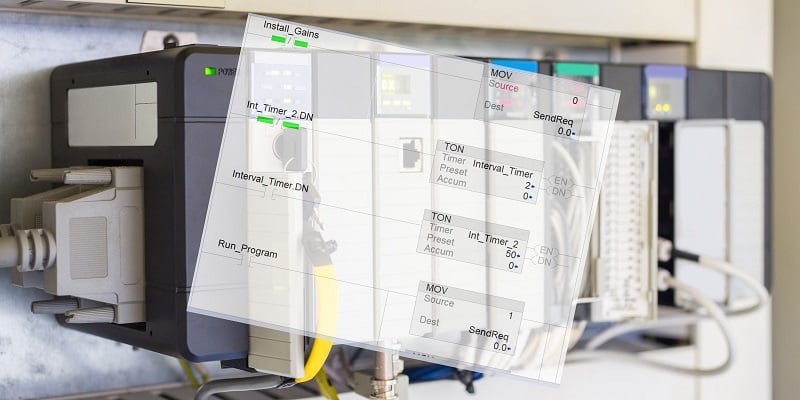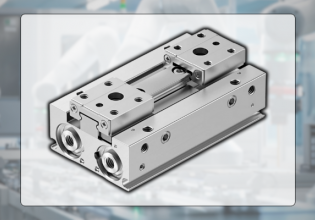Understanding the Automation Lingo: PLC, PAC, RTU, DCS, and SCADA
What are these terms, PLC, PAC, RTU, DCS, SCADA? Why are they so important to industrial robotics and automation? Explore how each different piece functions to build a comprehensive automated system.
Modern control systems are the combined effort of various components, each with its own job to accomplish, working in harmony to provide seamless control for a plant or industrial system. Although the variety of components is bound to change over time, the current snapshot of industrial automation reveals a few heavy-hitting key players.
PLC
PLC is the extremely common acronym for programmable logic controller. These are the ‘brains’ of many different industrial processes and are essentially industrial-grade computers used to execute control functions down at the equipment level.
The PLC was originally invented to replace relay banks as control systems for industrial automation, saving massive costs over those relay controls by reducing the amount of hardware necessary and eliminating the need to physically re-wire each relay whenever a change needs to be made to the control system. This is possible because PLCs can simply be reprogrammed like any modern computer.

Ladder logic looks similar to a legacy relay control drawing.
Most PLCs use some form of ladder logic for programming which mimics the physical relay control system logic. Often called ladder logic, the program looks like a ladder of relays and other electrical components with the ‘rungs’ placed between the power, represented on the sides. This can all be digitally displayed and reprogrammed on a computer or sometimes (especially in older systems) on a dedicated interface.
PLCs find use in many different processes in automation, controlling everything from lights to actuators and other control components. But the PLC, but formal definition, only performs logical bit manipulation, it didn’t originally handle advanced communication and data sharing with higher and lower-level networks. When these functions started appearing, a new name for these devices began to take shape.
PAC
PAC stands for programmable automation controller, and can be thought of as this ‘advanced’ PLC with more functionality and a higher level of processing power. PLCs are fairly simple in their capabilities, while PACs often have access to much more memory and significantly higher processing power than a standard, simple PLC.
They are often used to perform tasks that involve PID controls, communication, SCADA, data logging, and other tasks that were traditionally beyond the scope of basic PLCs.
PLCs are (or were) usually not powerful enough for use in motion control applications, so a PAC becomes the ideal control unit for this type of automation control. PACs have an advantage because they can execute more than one operation at a time because they are built with more than one processor chip. In addition, they often contain a high bandwidth backplane giving them quick data acquisition for faster data control and efficient processing.
Although most companies actually manufacture PACs these days, we almost always still refer to them as PLCs, since they still accomplish logic control tasks and we are familiar with the concept. So there is very little argument or debate if a PAC is still referred to as a PLC.
As an aside, the concept of the IPC (industrial PC) is making strides to potentially be the next evolution of the control system processor of choice, so a future revision of this article would likely include new technology!
RTU
A remote terminal unit, or RTU, is a control device located separate from a larger control unit, usually as part of a much larger system. In many cases, they are part of a DCS or SCADA system, and comprise some of the individual components that a SCADA is used to monitor. RTUs often control or monitor individual sub-units of equipment, such as sensors, valves, fans, and actuators.
RTUs have advanced over time and are often capable of executing programmable logic, similar to that of a modern PLC. There are different methods for relaying information back to the main control system, but most modern RTUs use Ethernet or some similar form of communication. In fact, one of the most popular network protocols of all time, Modbus RTU, was designed simply to interface with these units.

RTUs are often part of a SCADA system and can be used to control single components such as valves. Pictured above are examples of RTUs from Schneider (left) and from Honeywell (right)
RTUs generally consist of a few common components that work together for a successful independent control unit. They usually contain some sort of basic CPU to analyze inputs and then make decisions for the system or relay information as outputs. They also contain some form of local or remote I/O interface to get information from their operation to better understand the status of the device they oversee.
In short, an RTU is like a very basic PLC used to control some external, isolated I/O device or network, forming a part of a larger-level control system.
DCS
A DCS (distributed control system) is a step up to a higher-level system used to control and monitor multiple systems at once. They often have a level of redundancy built into them to help mitigate the risk of downtime should there be a DCS failure. They are used to monitor a series of systems, often plant-wide, and monitor information to keep track of process data points and to control outputs. This allows for easier modifications when necessary within the series of systems they are monitoring.
The DCS is not a single product that you can purchase, like a PLC or RTU would be, but rather an entire plant-level set of products from field-level I/O up through the controllers, all the way to software for production, monitoring, and scheduling.
Generally, most DCSs consist of like-branded electronic control components so the components can all communicate easily with each other. For example, it makes sense for a new system to use all one brand of PLCs, I/O networks, and software to ensure that all of the equipment is compatible and able to communicate with the DCS. Legacy equipment can be patchworked to accept a DCS, but this will usually be a more complicated and costly endeavor than designing from the ground up.
SCADA
Supervisory control and data acquisition, or SCADA, is the term used to describe a type of equipment monitoring and control system used in many different manufacturing processes. These systems are often used for the efficient control of the hardware and software of many systems to help increase the efficiency of entire plant (or global) processes.
SCADA systems often contain an HMI (human machine interface) as part of its infrastructure, used to help an operator in a control room make decisions about the state of the system and make changes when necessary as equipment status is updated.

SCADA systems are often the center of a plant control room. Image used courtesy of Adobe Stock
A SCADA works by monitoring many different systems within a plant and relaying them to a central location. The data is either automatically monitored and dealt with in the SCADA programming or displayed on a monitor where an operator can then make the correct decisions and make changes to the system through the HMI. This type of control system is useful in operations that need many different processes to work together successfully.
A good SCADA example might be in a large process plant where product moves from location to location, changing states along the way. A bulk cement plant, for example, needs to cook raw material at a high temperature, and an operator must monitor temperatures and the chemical makeup of the product as it moves through the plant. If, at any point, the product is not meeting spec, the operator can make the appropriate changes to bring it back into spec.
Control Lingo
As technology advances, the lines between various components become blurred. Some devices move to obsolescence while others evolve and combine with separate devices to create a single, more cost-effective solution.
It’s not important to spend time memorizing formal definitions since they are bound to change, but do understand the equipment that runs your own plant and remain open-minded to future trends and be prepared to learn how new technologies can make you a more effective control engineer.






